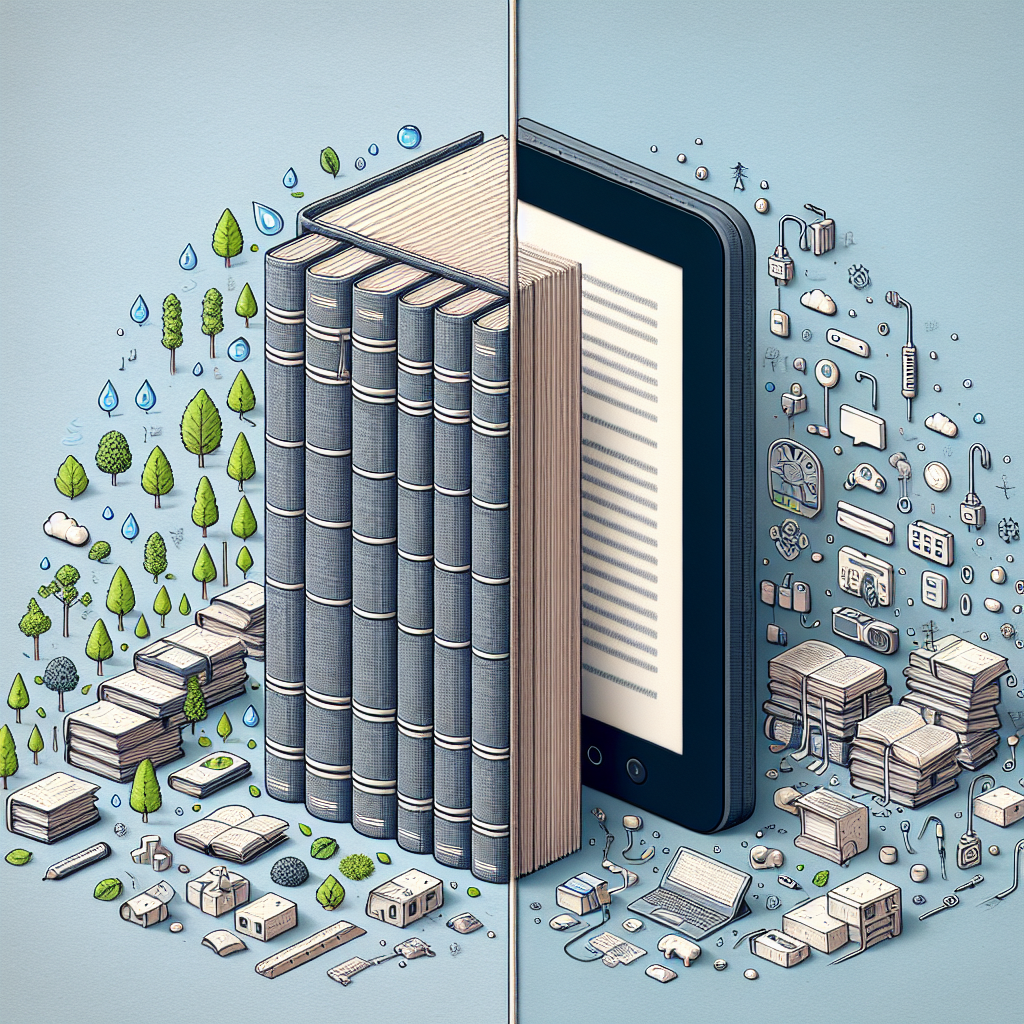Your cart is currently empty!
The Environmental Impact of Paperback Books vs. E-Books

In today’s digital age, more and more people are turning to e-books as a convenient and accessible way to read. However, many readers still prefer the feel of a physical book in their hands, leading to the ongoing debate between paperback books and e-books. One aspect of this debate that is often overlooked is the environmental impact of both formats.
When it comes to the production of paperback books, there are several environmental concerns to consider. First and foremost, the paper industry is a major contributor to deforestation and habitat destruction. The process of making paper also requires a significant amount of water and energy, as well as the use of chemicals that can harm the environment. Additionally, the transportation of physical books, from the printing press to the bookstore, contributes to carbon emissions and air pollution.
On the other hand, e-books are often touted as a more eco-friendly option. E-books do not require paper, ink, or any of the other materials used in the production of physical books. This means that e-books have a much lower carbon footprint than paperback books. Additionally, e-books eliminate the need for transportation and storage, further reducing their environmental impact.
However, it’s important to consider the environmental impact of e-books as well. E-readers and other electronic devices require resources to produce, including rare earth metals, plastics, and energy. The manufacturing and disposal of these devices can have negative environmental consequences, including pollution and waste. Additionally, e-books are often stored in data centers that require a significant amount of energy to operate, contributing to carbon emissions.
So, which format is truly the more environmentally friendly option? The answer is not so clear-cut. While e-books have a smaller carbon footprint than paperback books, they are not without their own environmental concerns. Ultimately, the best choice for the environment may be to find a balance between the two formats. Consider purchasing paperback books from sustainable sources, or borrowing books from libraries to reduce your environmental impact. If you prefer e-books, try to extend the life of your electronic devices and support companies that prioritize sustainability in their operations.
In conclusion, the environmental impact of paperback books versus e-books is a complex issue that requires careful consideration. Both formats have their pros and cons when it comes to sustainability, and it’s up to us as consumers to make informed choices that align with our values. By being mindful of the environmental impact of our reading habits, we can help minimize our footprint on the planet and support a more sustainable future for generations to come.

Leave a Reply